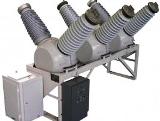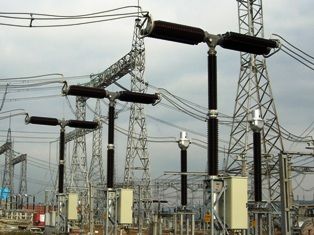Circuit breakers SF6: pros and cons of operation
An article on the advantages and disadvantages of SF6 high voltage circuit breakers.
 High-voltage circuit breakers are used to change the high-voltage state of an "on-off" line for the purpose of operational control of the existing power supply system and to disconnect equipment or a section of the network in emergency situations.
High-voltage circuit breakers are used to change the high-voltage state of an "on-off" line for the purpose of operational control of the existing power supply system and to disconnect equipment or a section of the network in emergency situations.
High-voltage switches are used for these purposes:
- butter;
- air;
- vacuum;
- SF6 gas.
The names of the switches reflect the composition of the medium for extinguishing the arc between the contacts of the switch, which occurs when switching high voltage. Here some caveats about the oil switch are in order — it would be more correct to say that the arc is extinguished in a kind of gas bubble formed when arcing in the thickness of the oil volume. Oil switches are easy and cheap to operate, but incendiary and explosive.
In the air interrupter, the arc is extinguished by the powerful air flow from the pressure vessels.Like oil circuit breakers, high voltage air circuit breakers can be manufactured for the entire range of applied voltages and currents. But their constructions are more complicated and more expensive than petroleum ones, and their operation requires a compressor station to obtain clean, dry air.
The vacuum interrupter arc is extinguished in the vacuum space of the arc chute. The electrical strength of the vacuum is extremely high and recovers very quickly after an electrical breakdown. In addition, such switches are distinguished by high reliability and reduced maintenance costs and simple design.
Among the disadvantages of vacuum switches are noted:
- high price;
- the possibility of overvoltage in the network under certain conditions;
- creating switches for higher voltages requires certain technical tricks.
SF6 high voltage circuit breakers whose arcing devices operate in the environment «Electrotechnical gas» SF6, combine the advantages of different types of switches:
- it is possible to use SF6 circuit breakers for each of the voltages used in the domestic electricity;
- low weight and overall dimensions of the construction of SF6 circuit breakers in combination with silent operation of the drive;
- the arc is extinguished in a closed volume of gas without access to the atmosphere;
- harmless to people, environmentally friendly, inert gas media of the SF6 circuit breaker;
- increased switching capacity of the SF6 breaker;
- operation in switching mode of high and low currents without the occurrence of overvoltage, which automatically excludes the presence of overvoltage limiters (overvoltage limitation);
- high reliability of the SF6 breaker, the overhaul period increases to 15 years;
- fire safety of the equipment.
Disadvantages of SF6 circuit breakers include:
- high equipment costs and ongoing operating costs, as the quality requirements of SF6 gas are very high;
- the ambient temperature affects the physical state of SF6 gas, which requires the use of heating systems with circuit breakers at low temperatures (at -40 ° C, SF6 gas turns into a liquid);
- the switching resource of an SF6 circuit breaker is lower than that of a similar vacuum circuit breaker;
- high quality tank and piping seals are required as SF6 is very liquid.
At the end of the last century, there was a technological breakthrough in the world's energy sector high voltage switchgear… Oil and air circuit breakers gradually gave way to vacuum and SF6 circuit breakers. This is due to the excellent arc suppression properties of the vacuum, as well as the gas with the chemical formula SF6, called SF6, and the increased safety in the operation of the switching equipment with their use. And although vacuum and gas-insulated equipment is not cheap, a worthy competitor for arc-vacuum and SF6 extinguishing has not yet been found.

